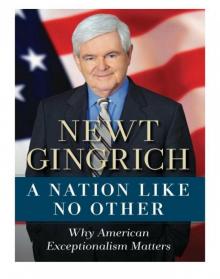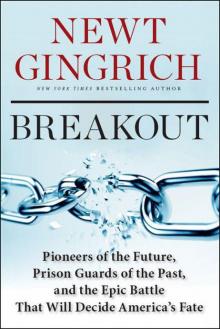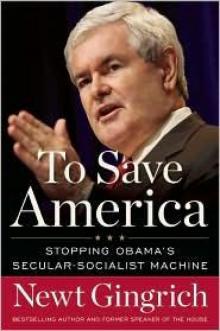- Home
- Newt Gingrich
Understanding Trump Page 20
Understanding Trump Read online
Page 20
Career training is also one of the best ways for those facing urban and rural poverty to improve their lives.
USA Today reported in 2014 that 2.5 million new special skilled jobs were expected to be available in 2017. These are good-paying jobs in construction, manufacturing, and other industries that require two-year degrees, certificates, or other noncollege training.9
The newspaper reported that all of those jobs would pay more than $13 an hour; many would pay much more and most require much less training than a four-year degree. After looking at 125 of the country’s largest metropolitan areas, the newspaper found Houston would add 100,000 skilled labor jobs—40,000 of which would pay more than $20 an hour. Atlanta would be looking for about 77,000 workers for its budding film industry. The average pay for those jobs would be $84,000 a year. And “in most metro areas, some of the best-paying middle-skill jobs include radiation therapists, elevator installers and repairers, and dental hygienists, all with a median wage of more than $70,000.”
Making sure Americans are trained and ready for these types of jobs is the best way to rebuild our middle class.
IMMIGRATION
At the same time, President Trump can help close the labor gap by focusing on improving legal immigration.
President Trump’s proposal during his 2017 address to a joint session of Congress could help the United States achieve this. In his speech, the president suggested focusing on a merit-based system, similar to the one used by our northern neighbor, Canada. He said:
It’s a basic principle that those seeking to enter a country ought to be able to support themselves financially. Yet, in America, we do not enforce this rule, straining the very public resources that our poorest citizens rely upon. According to the National Academy of Sciences, our current immigration system costs American taxpayers many billions of dollars a year.
Switching away from this current system of lower-skilled immigration, and instead adopting a merit-based system, we will have so many more benefits. It will save countless dollars, raise workers’ wages, and help struggling families—including immigrant families—enter the middle class. And they will do it quickly, and they will be very, very happy, indeed.
I believe that real and positive immigration reform is possible, as long as we focus on the following goals: to improve jobs and wages for Americans; to strengthen our nation’s security; and to restore respect for our laws. If we are guided by the well-being of American citizens, then I believe Republicans and Democrats can work together to achieve an outcome that has eluded our country for decades.
A better guest worker program should include thorough criminal background checks for immigrant workers, identification cards encoded with workers’ biometric information, and a more efficient process. Most immigrants don’t want to turn to dangerous cartels to come to the United States, so they will be more likely to follow the rules to get a work visa if that process is expanded and made more efficient, and tailored to their skill set. And the immigrant workers who join the workforce would be paying taxes, operating in the full light of day, and helping reduce the demand for human smuggling, forged immigration documents, and other illegal activities that fuel business for criminal cartels. Once President Trump and Congress reduce taxes for businesses and individuals, repatriate US dollars being held offshore, eliminate burdensome regulations, make it easier for Americans to learn the skills they need to find jobs, and fix our broken immigration system, US productivity and trade will increase and America will be competitive again.
COMPETING FOR THE FUTURE
The United States can’t focus solely within its borders if it wants to lead in the twenty-first century.
During President Trump’s inaugural address, he invoked a part of the American spirit that has been silent for too long—its bold determination to reach for the stars.
“We stand at the birth of a new millennium, ready to unlock the mysteries of space, to free the earth from the miseries of disease, and to harness the energies, industries, and technologies of tomorrow,” President Trump said.
The possibility of competing in space is one of the things about a Trump-Pence administration that excites me most. And to be sure, both President Trump and Vice President Pence are vital to space policy.
Vice President Pence has long believed in the space program. Even before he was elected to Congress he traveled from Indiana to Florida to watch rockets being launched. As a freshman in Congress, his number one goal was to get on the space subcommittee of the House Science Committee. The vice president is delighted that he is now the chairman of the Space Council, which brings together all the elements of the federal government’s involvement in space.
I have been passionate about space since the Russians launched Sputnik in 1957. As an eighth-grader, I read Missiles and Rockets magazine—a periodical that covered the rapid evolution of our space capabilities. Like most Americans my age, I was fascinated by the Apollo program. I can still remember watching the first landing on the moon. At that time, everything seemed possible.
Then, NASA became bureaucratic. Funding was cut, and everything became slower, more expensive, and more risk averse.
Instead of the shuttle leading us into a bold new era, it became an enormously expensive system that absorbed money. NASA continued to fund science—and a lot of it has been extraordinary. However, the great adventure, the exploration of the unknown by humans, the spirit that got Americans to the moon in eight years, drowned in a sea of red tape.
In 1984, I hosted a series of dinners with Congressman Bob Walker, who later became chairman of the House Committee on Science and Technology and then led the Walker Commission on the Future of the United States Aerospace Industry under President George W. Bush.
At the dinners, we invited young NASA scientists. Most of them were under thirty-five years old.
The dinners were exciting and full of visionary ideas. I tried to capture them in a chapter of a book I wrote that year called Window of Opportunity. Unfortunately, the combination of bureaucratic inefficiency, lack of entrepreneurial daring, and timidity about risk taking on the part of the federal government guaranteed that thirty-three years later, most of the opportunities in space we discussed at the dinners are still unfulfilled.
In my 2012 presidential race, I went to the Space Coast of Florida and gave a boldly visionary speech about what was possible. I proposed:
By the end of my second term we will have the first permanent base on the Moon, and it will be American.
We will have commercial near-Earth activities that include science, tourism, and manufacturing, and are designed to create a robust industry precisely on the model that was developed by the airlines in the 1930s, because it is in our interest to acquire so much experience in space that we clearly have a capacity that the Chinese and the Russians will never come anywhere close to matching.
And by the end of 2020 we will have the first continuous propulsion system in space capable of getting to Mars in a remarkably short time, because I am sick of being told we have to be timid, and I’m sick of being told we have to be limited to technologies that are fifty years old.
A few of my primary opponents attacked the idea of investing in space. In fact, their hostility was so great that Greta Van Susteren did an interview contrasting John F. Kennedy’s bold, idealistic vision of going to the moon in 1961 with their penny-pinching, green-eyeshades reactionary attitudes.
Given that background, you can imagine how happy I was to see Trump’s positive, visionary attitude toward space.
TRUMP AND THE BILLIONAIRES: A NEW ERA IN SPACE EXPLORATION
Two developments are reaching an intersection that will make it much easier and cheaper to achieve the dynamic future in space that Trump favors.
First, new technologies are creating capabilities that didn’t exist before. Advances in computing enable engine and flight controls that were impossible a decade ago. New materials technology—including lightweight, moldable, woven carbon fibers—
are creating dramatic new possibility for spacecraft design.
Composite technologies have reduced in cost and increased in practicality since the development of the space shuttle (look at the Boeing 787 Dreamliner as an example). Progress on the creation of carbon nanotubes will soon give us a material vastly stronger and lighter than steel.
The potential in robotics, autonomous systems, and 3-D printing could soon make manufacturing on the moon and in space entirely possible.
Second, these advances in technology are being matched by a new entrepreneurial enthusiasm for space—specifically among a key group of very successful people. Consider three examples:
Elon Musk developed the first consistent private space company. SpaceX was founded in 2002 with the specific goal of dramatically lowering the cost of access to space by developing reusable rockets. It has now had eight successful recoveries of rockets, and it launched and landed its first reusable rocket in March 2017. SpaceX expects to be able to use and retrieve the same rocket with a one-day turnaround by 2018. SpaceX has government contracts and has been launching satellites for a private Luxembourg company. It currently plans to take two private citizens around the moon in 2018.
Musk’s stated goal is to build large enough spaceships to enable humans to colonize Mars. He is planning to develop what he calls the SpaceX Interplanetary Transport System that would take one hundred people at a time to Mars, with new engines that could get there in three months.
Space X still has a long way to go before it can get to Mars in three months. But for fifteen years, Musk has been steadily working toward that capability.
Jeff Bezos founded Blue Origin in 2000, two years earlier than Musk created SpaceX. However, Bezos has taken a very methodical capabilities-focused approach. His goal is to dramatically lower the cost of getting into space by having relatively inexpensive reusable rockets with short turnaround times.
Since Bezos is today one of the richest men in the world (his current estimated worth is $65 billion), he can pour a billion dollars a year into developing better, more powerful reusable rockets.
His first reusable vehicle, the New Shepard—named for Alan Shepard, the first American to go to suborbital space—first flew in 2015. It has achieved reusability with a two-month turnaround of the same rocket. Bezos hopes to start carrying space tourists into near space on suborbital flights in 2018.
Blue Origin is now developing a heavy-lift vehicle, the New Glenn—named for John Glenn, the first American to orbit the globe. This new, much bigger rocket will be competitive with the Titan IV as a lift vehicle for heavy satellites. Because it is reusable, it will be dramatically less expensive over time.
According to Bezos, it takes about $400,000 in fuel to launch a large satellite. However, since the current rockets can be used only once, the total cost is about $400 million. Therefore, Bezos reasons, if you could have a reusable rocket, the cost would drop by an order of magnitude to $40 million or less. Reducing the cost of getting into space by a factor of ten will open up massive potential for manufacturing, research, and space tourism.
While Musk focuses on Mars, Bezos looks to the moon. With 3-D printing and robotics, it will be possible to establish factories on the moon, which can use existing water and other resources to provide fuel for space activities. Since the moon only has one-sixth of earth’s gravity and no atmospheric drag, it will be much easier to launch from the moon. This creates potential for building really large spaceships and even mining asteroids—one of which is estimated to have $9 trillion worth of rare minerals.
Remarkably different than Musk and Bezos is the approach being taken by Microsoft cofounder Paul Allen. Allen has already funded Bert Rutan’s record-setting SpaceShipOne, which set the record in 2004 for flying to the edge of space twice. It is the first private vehicle to do so.
Now Allen is building Stratolaunch, the largest aircraft ever built. It will take rockets up to 35,000 feet and then launch them. As an airplane, it will be rapidly reusable and therefore much less expensive as a first stage, replacing the normal rocket first stage.
Allen’s strategy coincides with the development of tiny microsatellites. As electronics have gotten smaller, the potential for effective satellites of small size has grown. There are now satellites the size of a loaf of bread that perform key services.
We are on the verge of launching hundreds of small satellites that can do the work of one huge, expensive satellite. Paul Allen’s Stratolaunch may be a key enabler of this revolution.
In total, a team advising Trump has been able to identify sixteen billionaires with real interest in space. They are collectively worth $280 billion.
Vice President Pence may become the first vice president to lead a national space council of government agencies and a private entrepreneurial space council of major investors willing to go on their own, where no one has gone before (to paraphrase Star Trek).
Given President Trump’s belief in space and his experience as an entrepreneur, he may lead an even more dynamic program in space than President Kennedy did.
If the entrepreneurs can be encouraged to move as fast as technology can be developed, Americans reoccupying the moon could occur late in Trump’s first term. And this time, they would be there to stay. With a few breaks and some entrepreneurial daring, Americans could land on Mars either in Trump’s last year of his second term or in the first term of his successor.
NASA will be revolutionized by the need to strip away bureaucracy and focus on achievements rather than paper studies. The speed and energy of the entrepreneurs will force NASA to eliminate bureaucracy or become irrelevant.
President Trump’s entire career has involved dreaming big and undertaking bold projects.
As he carries this pattern into space, some of my childhood dreams and the dreams of millions of Americans will be coming true.
In every conversation I have had about health care with Trump, both when he was a candidate and as president, he has emphasized the importance of getting great health care for every American. He simply doesn’t accept that we can spend this much money and do such a bad job of helping people. He is a naturally generous person, and there are an amazing number of people who can tell you how he has helped them when they had a medical crisis. He will try to bring this personal care approach to getting the American health system to work for everyone.
CHAPTER TWELVE
THE HEALTH BOX
Obamacare, in the words of President Trump, is a “disaster.”
It is a disaster for two reasons.
First, the law creates a set of rules that make it impossible for insurance companies to offer low-cost plans to people who buy health insurance directly, instead of through their employer. These high-cost plans cannot attract enough healthy people to offset the health care costs incurred by the sick people enrolling who desperately need the coverage. The result has been a “death spiral” of rapidly rising premiums that prevent healthy people from signing up, and the problems worsen. That’s why premiums increased by an average of 22 percent in the individual marketplace from 2016 to 2017.
Second, Obamacare was primarily health insurance reform, not health care reform. This distinction is important. Obamacare focused on the rules governing health insurance and largely ignored the underlying problems in the health care system that increase health care costs. Those rising costs are responsible for the huge rise in premiums over the past several decades—the dynamics of the insurance marketplace play only a minor role.
The American Health Care Act, which President Trump and Speaker Ryan attempted to pass in March 2017, would have been a good first step to address the first problem. The law, combined with administrative actions at the Department of Health and Human Services, would have led to price stabilization and more insurance choices in the individual marketplace.
However, the law still suffered from the second problem with Obamacare—it dealt primarily with financing health insurance; it wasn’t actual health care reform. So, th
e failure to pass the American Health Care Act should not be treated as the end of health reform. In fact, it may have been the best thing that could have happened to get something much better.
WHY THE AMERICAN HEALTH CARE ACT FAILED
Before exploring what real health reform would look like, it is important to examine the effort to pass the American Health Care Act to avoid repeating the mistakes that were made that led to its failure.
The Republican congressional leadership’s mistake was trying to repeal and replace Obamacare under the business-as-usual rules of Washington.
First, they allowed the Congressional Budget Office to score the bill. Even though the Republicans rejected the CBO’s fake estimate, simply allowing it to exist in the first place gave the Democrats and the media the gift of being able to quote “the nonpartisan CBO” to attack the bill.
Second, they accepted the limitations of the Senate reconciliation rules even though that guaranteed the bill would be insufficient to satisfy conservative members.
Third, they rushed the bill by setting a deadline. This contradicts everything we know about what it takes to pass big reforms. President Reagan took eight months to pass his tax cut, which was very popular. When I was Speaker of the House of Representatives, we took eighteen months to pass welfare reform, which was at 92 percent approval. In contrast, Republican congressional leaders tried to pass a very complicated repeal and replace bill in less than three months.
Fourth, they focused on a complex Washington insider argument and process involving a “three-step plan” and arcane Senate rules while their opponents in the media and in left-wing groups hammered away at the alleged human cost of their bill. The old rule in Washington applies: “If you are explaining, you are losing.”

 1945
1945 Collusion
Collusion Trump's America
Trump's America Shakedown
Shakedown A Nation Like No Other
A Nation Like No Other To Try Men's Souls - George Washington 1
To Try Men's Souls - George Washington 1 Pearl Harbor: A Novel of December 8th
Pearl Harbor: A Novel of December 8th Valley Forge: George Washington and the Crucible of Victory
Valley Forge: George Washington and the Crucible of Victory To Save America
To Save America Grant Comes East cw-2
Grant Comes East cw-2 Victory at Yorktown: A Novel
Victory at Yorktown: A Novel Days of Infamy
Days of Infamy The Battle of the Crater: A Novel (George Washington Series)
The Battle of the Crater: A Novel (George Washington Series) Breakout: Pioneers of the Future, Prison Guards of the Past, and the Epic Battle That Will Decide America's Fate
Breakout: Pioneers of the Future, Prison Guards of the Past, and the Epic Battle That Will Decide America's Fate Pearl Harbour and Days of Infamy
Pearl Harbour and Days of Infamy Pearl Harbour - A novel of December 8th
Pearl Harbour - A novel of December 8th Understanding Trump
Understanding Trump To Save America: Abolishing Obama's Socialist State and Restoring Our Unique American Way
To Save America: Abolishing Obama's Socialist State and Restoring Our Unique American Way